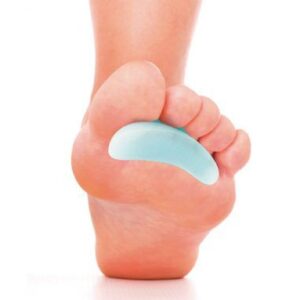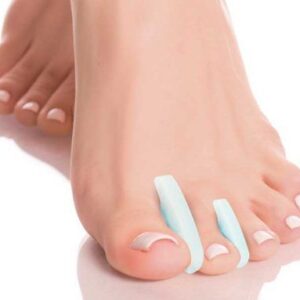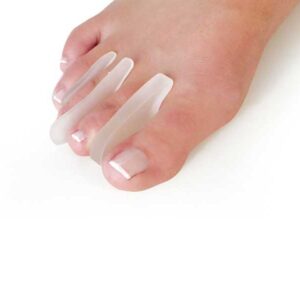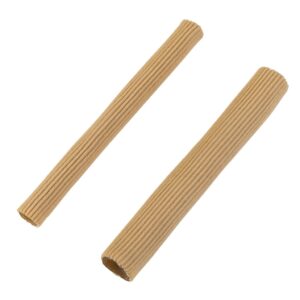Hammer toes
Hammer toes are characterised by abnormal curvature in the distal joints of the toes, usually affecting the second, third, fourth or fifth toes.
Most common foot pathologies
Symptoms
Downward curvature of the fingertips, especially in the distal phalanges; Pain and oedema (swelling) can occur in the affected joints; Calluses due to uneven pressure on the curved areas.
Common types: Flexible Hammer Toes - Can be straightened manually; Rigid Hammer Toes - Cannot be straightened manually.
Risk Factors
Older age due to the increased likelihood of joint wear; Frequent use of high-heeled shoes; Activities that put pressure on the fingers such as running or dancing; Muscle and ligament imbalances between those that control finger extension and flexion; Trauma or injuries to the joints can predispose to the formation of hammer toes.
Protective Factors
Wearing suitable footwear with enough room for the toes and adequate support; Stretching and strengthening exercises to maintain flexibility and strengthen muscles; Adjusting daily habits such as avoiding tight shoes and adopting suitable postures.
Treatment
Orthoses or devices to help correct the position of the fingers; Exercises to improve the range of movement and strengthen the muscles; In severe cases or when other options are not effective, surgery may be necessary.
Information: All the information contained here is merely a summary for a general understanding of the pathologies, highlighting their definition, symptoms, risk factors, protective measures and treatment options.
Consulting a specialised health professional is essential for an accurate diagnosis and an effective treatment plan.
Hammer Finger Support and Protection
Discover all the orthoses for hammer toes
-
Seleccione Opções This product has multiple variants. The options may be chosen on the product page
-
Seleccione Opções This product has multiple variants. The options may be chosen on the product page
-
Seleccione Opções This product has multiple variants. The options may be chosen on the product page
-
Seleccione Opções This product has multiple variants. The options may be chosen on the product page
-
Seleccione Opções This product has multiple variants. The options may be chosen on the product page
-
Seleccione Opções This product has multiple variants. The options may be chosen on the product page
-
Seleccione Opções This product has multiple variants. The options may be chosen on the product page
-
Seleccione Opções This product has multiple variants. The options may be chosen on the product page
-
Seleccione Opções This product has multiple variants. The options may be chosen on the product page
-
Seleccione Opções This product has multiple variants. The options may be chosen on the product page
-
Seleccione Opções This product has multiple variants. The options may be chosen on the product page
-
Seleccione Opções This product has multiple variants. The options may be chosen on the product page
-
Seleccione Opções This product has multiple variants. The options may be chosen on the product page
-
Seleccione Opções This product has multiple variants. The options may be chosen on the product page
-
Seleccione Opções This product has multiple variants. The options may be chosen on the product page
-
Seleccione Opções This product has multiple variants. The options may be chosen on the product page
-
Seleccione Opções This product has multiple variants. The options may be chosen on the product page
-
Seleccione Opções This product has multiple variants. The options may be chosen on the product page
-
Seleccione Opções This product has multiple variants. The options may be chosen on the product page
-
Seleccione Opções This product has multiple variants. The options may be chosen on the product page
-
Seleccione Opções This product has multiple variants. The options may be chosen on the product page
-
Seleccione Opções This product has multiple variants. The options may be chosen on the product page
-
Seleccione Opções This product has multiple variants. The options may be chosen on the product page
-
Seleccione Opções This product has multiple variants. The options may be chosen on the product page





































